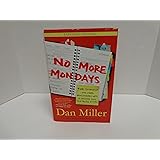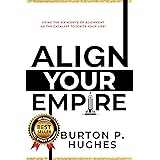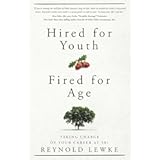Navigating the complex currents of a professional career often raises a pivotal question:
How long should you strategically stay at your job to optimize both your advancement and your financial trajectory?
The video above delves into this very quandary, exploring contemporary career philosophies, economic realities, and the evolving dynamics of employer-employee relationships. It critically examines the conventional wisdom surrounding job tenure, offering a nuanced perspective that challenges long-held beliefs about loyalty and growth.
Understanding Optimal Job Tenure in a Dynamic Economy
The contemporary employment landscape is characterized by unprecedented fluidity, demanding a re-evaluation of what constitutes optimal job tenure. Historically, a long tenure at a single company was lauded as the pinnacle of professional success and stability. However, current market conditions suggest a more agile approach may yield greater dividends for career advancement and salary progression.
Recent data underscores this shift, with 95% of American workers reportedly planning to seek new employment in 2024. A significant driver for this widespread intent is the pursuit of higher compensation; approximately 45% of workers explicitly state the need for increased income. This compelling demand for better financial terms often translates into strategic job changes, as individuals discern that switching employers can be a more direct pathway to substantial salary increments.
For instance, in February 2024, individuals who remained in their roles for over three months observed an average salary increase of 5.1% year-over-year. In stark contrast, those who transitioned to new jobs experienced a more robust average increase of 5.9%. This disparity functions as a powerful incentive, illustrating the immediate financial benefits often associated with strategic career moves. Consequently, the concept of job loyalty is increasingly being re-framed through the lens of individual financial and professional empowerment, compelling a more data-driven approach to career progression.
The Strategic Imperative of Job Mobility and Growth
While the allure of higher salaries is undeniable, the decision to change roles extends beyond mere monetary gain; it encompasses a broader pursuit of professional growth and skill acquisition. Experts frequently emphasize the critical importance of a strategic approach to job mobility. Rushing up the corporate ladder too quickly, without foundational skill development, can inadvertently position an individual as an “expensive head,” potentially vulnerable during economic downturns.
A key rationale behind job transitions, particularly among younger generations like Gen Z, is the ardent desire for advancement opportunities. Gen Z, for example, is 36% more inclined than other generations to prioritize such prospects. Even when internal promotion pathways exist, external opportunities often provide a faster, more transparent route to higher seniority and increased income levels. This phenomenon occurs because internal promotions typically necessitate a pre-existing vacancy, such as a colleague’s departure or a company’s organic expansion, which may not align with an individual’s desired pace of progression.
Furthermore, external job searches on platforms like ZipRecruiter offer a clearer view of market wages and available roles, simplifying salary negotiations. In contrast, discussing internal advancement with a manager can often be an uncomfortable and less transparent process. This ease of external exploration further empowers professionals to seek out roles that align more closely with their long-term career aspirations, thereby making a calculated leap to a new opportunity a strategic maneuver rather than a mere impulsive departure.
Beyond Salary: Holistic Factors Influencing Job Tenure
Although compensation and career progression are primary motivators, several ancillary factors profoundly influence an individual’s decision to alter their optimal job tenure. These include the pursuit of superior benefits packages, the imperative to escape toxic work environments, and the critical need for an improved work-life balance. Monetary incentives alone cannot guarantee job satisfaction; investment banks and private equity firms, for instance, often offer significant remuneration but are not universally recognized as paragons of workplace happiness. This paradox highlights the importance of how employees are treated on a day-to-day basis, including interpersonal dynamics and overall workplace culture, which can profoundly outweigh purely financial considerations.
Moreover, individuals frequently hold specific career aspirations that their current positions may not adequately fulfill. A professional might, for example, harbor a long-term ambition to establish an independent consulting firm. In such a scenario, each job becomes a deliberate stepping stone, a carefully selected crucible for acquiring essential skills and exposure. The focus shifts from merely accumulating time in a role to rigorously assessing whether a position contributes demonstrably to a predefined skill acquisition roadmap. If a current role ceases to offer opportunities for desired skill development, a strategic move to a new employer becomes a logical and necessary progression in their bespoke career architecture.
This evolving mindset reflects a broader societal shift, particularly among younger generations, who increasingly inquire how their career can serve their life goals, rather than the inverse. This proactive stance on career management underscores a fundamental re-evaluation of traditional loyalty, placing personal and professional fulfillment at the forefront of employment decisions. Consequently, the average duration individuals spend in a single role has remained relatively consistent over decades, with the median tenure hovering between three to four years. In 2022, this figure stood at 4.1 years, reflecting a slight increase from 3.7 years in 2002 and 3.5 years in 1983, yet still signifying a dynamic employment landscape.
The Age-Driven Cadence of Job Changes
The overall median job tenure statistics, while informative, present a more granular picture when disaggregated by age group. The frequency of job changes is significantly influenced by an individual’s age, often more so than by their generational cohort. For instance, workers aged 20 to 24 typically demonstrate a tenure of less than one and a half years. This early-career mobility gradually extends with age, as older workers tend to exhibit longer durations in their respective roles. A comprehensive Bureau of Labor Statistics study reinforces this observation, revealing that American adults born between 1957 and 1964 held an average of 12.7 jobs from ages 18 to 56, with nearly half of these transitions occurring before the age of 25.
This data elucidates a natural, age-driven inclination toward job exploration and skill diversification during early career stages. The early twenties are generally considered a period of low-risk experimentation, where professionals can explore various industries and roles without significant long-term repercussions. Mistakes made at 22 are readily recoverable, offering invaluable learning experiences that contribute to a more refined understanding of personal and professional preferences. As individuals mature into their late twenties and early thirties, career decisions tend to become more strategic and intentional, largely because the stakes become considerably higher. By this juncture, individuals are typically seeking stable careers, competitive salaries, and robust benefits, necessitating a more deliberate approach to professional transitions to avoid potential missteps.
The historical paradigm of lifelong company loyalty, often instilled by preceding generations, was frequently underpinned by benefits such as pensions, which are largely absent in today’s employment contracts. This erosion of traditional long-term incentives has inherently diminished the impetus for enduring loyalty. Modern professionals, particularly Gen Z and millennials, are increasingly empowered to ask whether a job or career path is truly serving their evolving needs and aspirations, rather than feeling obligated to conform to static career trajectories. This introspective approach is fundamental in determining an individual’s optimal job tenure.
Navigating the Risks and Rewards of Job Mobility
While strategic job mobility offers considerable advantages, it is not without potential drawbacks. One significant consideration involves the accrual of ancillary benefits, such as 401K matching programs, which often vest over a specified period. Departing prematurely from an employer could mean forfeiting a portion of these valuable contributions, effectively leaving money on the table. A crucial aspect of strategic planning therefore involves understanding the vesting schedules of all benefits before tendering a resignation.
Furthermore, job hopping without a clear understanding of one’s developmental stage can be a substantial risk. Focusing solely on immediate pay bumps without acquiring the requisite skills might lead to a precarious professional position. True career growth, as many experts contend, is a function of skill mastery and demonstrated accomplishment, rather than merely elapsed time or incremental salary adjustments. Indeed, some professionals strategically accept temporary pay reductions if a new role promises accelerated skill acquisition, recognizing that such investments often yield tenfold returns in future earning potential.
The broader economic climate and prevailing labor market conditions also play a pivotal role in dictating the prudence of a job change. During periods of economic uncertainty, such as the environment reflected by the Glassdoor Employee Confidence Index falling to its lowest point since 2016 in January 2024, securing a new position can be arduous. Job searches currently take an average of six to twelve months, leading to widespread application burnout, particularly among Gen Z workers. While 75% of Gen Z might consider quitting without a new job lined up, a more cautious, strategic approach dictates securing another opportunity before giving notice, mitigating substantial personal and financial risk.
Employer Perspectives and the Goldilocks Dynamic
From an organizational standpoint, employee turnover presents a multifaceted challenge, frequently perceived as both costly and disruptive. The resources allocated to hiring—spanning time, effort, and financial investment—are substantial, rendering employee retention a paramount concern for approximately 90% of organizations. Consequently, fostering strong learning cultures and providing robust opportunities for employees to upskill are increasingly recognized as essential components for cultivating internal mobility and a healthy management pipeline. These initiatives are designed to prolong optimal job tenure within their workforce.
However, an interesting “Goldilocks dynamic” often characterizes employers’ views on turnover. Not all turnover is inherently detrimental. A company that experiences no turnover whatsoever might inadvertently retain underperforming employees or stifle the influx of fresh perspectives and innovative talent. Therefore, some employers adopt a more nuanced and forgiving attitude toward work history, particularly when job transitions are demonstrably linked to a clear career objective, such as the pursuit of enhanced learning opportunities or broader experience. Employers are generally less favorably inclined toward frequent job changes driven solely by marginal salary increases, viewing such moves as lacking strategic intent.
Ultimately, the decision regarding optimal job tenure is a deeply personal one, requiring profound introspection and self-awareness. It necessitates a clear understanding of one’s current skill set, future aspirations, and the alignment of these factors with available opportunities. While external advice and market data provide valuable context, the most judicious career choices emanate from a comprehensive assessment of individual circumstances and long-term professional objectives. No singular formula dictates the perfect duration for every role, as each professional journey is as unique as the individual undertaking it.









